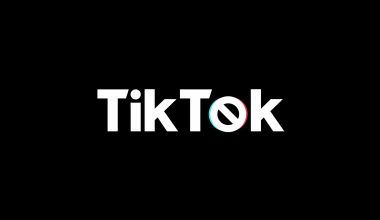If you’re an independent artist, getting your music on popular platforms like Spotify, Apple Music, and Amazon Music can seem overwhelming. Distributors often act as middlemen, taking a cut of your earnings or charging fees to upload your tracks. But did you know it’s possible to upload your track on all digital stores without a distributor? It may sound challenging, but it’s entirely doable, and this guide will walk you through the process step by step.
Why Skip the Distributor?
Before we dive into the how, let’s talk about the why. Distributors can be a great resource for many artists, but they’re not always the best option for everyone. If you’re on a tight budget or want to maintain complete control over your music, skipping the distributor might be a better choice. By handling the Upload your track on all digital stores without a distributor yourself, you can save money and manage your releases without relying on a third party.
Understanding the Basics of Digital Stores
Digital music stores and streaming platforms operate with a few essential requirements. To get your music listed, you’ll need:
- High-quality audio files (usually in WAV or FLAC format)
- Metadata, including the track title, artist name, and album details
- Album artwork that meets the platform’s specifications
- An International Standard Recording Code (ISRC) for each track
Don’t worry if some of these terms are new to you. We’ll explain everything in detail as we go along.
Step 1: Prepare Your Music Files
The first thing you need to do is ensure your music files are ready for upload. Most platforms require audio files in a lossless format like WAV or FLAC, so make sure your tracks are in one of these formats. Avoid using MP3 files, as they don’t meet the quality standards of most stores.
It’s also essential to check the bitrate of your files. A standard bitrate for digital stores is 16-bit, 44.1 kHz. If your tracks don’t meet this specification, you can use audio editing software to convert them.
Step 2: Create Your Metadata
Metadata is the information that describes your music. It includes details like:
- Track title
- Artist name
- Album or single title
- Genre
- Release date
- Composer and lyricist credits (if applicable)
Accurate metadata is crucial because it’s what listeners see when they search for your music. Double-check for typos and ensure all the information is consistent across your tracks.
Step 3: Design Your Album Artwork
Your album artwork is another critical element. It’s the first thing listeners see, so it needs to make a good impression. Most platforms have specific requirements for artwork:
- Minimum dimensions: 3000 x 3000 pixels
- File format: JPEG or PNG
- Color mode: RGB
- No text or logos that violate copyright rules
If you’re not a designer, don’t worry. You can use tools like Canva or hire a freelance graphic artist to create professional-looking artwork.
Step 4: Obtain ISRCs and UPCs
An ISRC (International Standard Recording Code) is a unique identifier for each track, while a UPC (Universal Product Code) is used to identify your album or single. These codes are essential for tracking sales and streams on digital platforms.
Many distributors provide ISRCs and UPCs as part of their service, but since you’re bypassing them, you’ll need to get these codes yourself. You can purchase ISRCs from your local ISRC agency or use an online service that provides them for independent artists.
Step 5: Choose Platforms That Allow Direct Uploads
While some major platforms only accept uploads through distributors, others let independent artists upload their music directly. Here are a few options:
- Bandcamp: Ideal for selling music and connecting with fans.
- SoundCloud: Great for sharing tracks and building a following.
- Audiomack: A free platform that supports direct uploads.
- YouTube Music: Upload your tracks via YouTube’s Content ID system.
- Tidal’s Amuse: A free platform that distributes your music without a middleman.
Each platform has its own upload process, but they’re generally straightforward. You’ll need to create an account, fill out your metadata, and upload your files.
Step 6: Use Aggregators for Wider Reach
If you want to get your music on platforms that don’t allow direct uploads, consider using an aggregator. Aggregators are similar to distributors but often offer more flexibility and lower fees. They’ll help you upload your track on all digital stores without acting as a traditional middleman. Examples include:
- RouteNote: Offers free distribution with a revenue-sharing model.
- Amuse: A user-friendly platform for indie artists.
- LANDR: Known for its affordable pricing and additional mastering services.
Step 7: Monitor Your Music’s Performance
Once your music is live, keeping track of its performance is essential. Use analytics tools provided by the platforms to monitor streams, downloads, and listener demographics. This data can help you make informed decisions about future releases and promotional strategies.
Step 8: Promote Your Music
Uploading your track is just the first step. To reach listeners, you’ll need to actively promote your music. Share your tracks on social media, collaborate with other artists, and engage with your audience. Building a loyal fanbase takes time, but consistent effort will pay off.
Final Thoughts
While it requires a bit more effort, Upload your track on all digital stores without a distributor is entirely possible. By taking control of the process, you can save money, maintain full ownership of your music, and build a direct connection with your audience. Follow the steps outlined in this guide, and you’ll be well on your way to sharing your music with the world.
Remember, every successful artist started somewhere. With determination and the right tools, you can achieve your music goals. So, what are you waiting for? Start preparing your tracks today and take the first step toward music independence.
Related Articles:
For further reading, explore these related articles:
- How to Release Your Video on JioSaavn Easily
- How to Release Your Video on JioSaavn Globally with Ease
For additional resources on music marketing and distribution, visit DMT RECORDS PRIVATE LIMITED.






